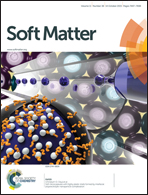Guided differentiation of bone marrow stromal cells on co-cultured cartilage and bone scaffolds
Abstract
Focal chondral defects that result from traumatic injuries to the knee remain one of the most common causes of disability in patients. Current solutions for healing focal cartilage defects are mainly limited by the production of inferior cartilage-like tissue and subsequent delamination due to incomplete healing of the subchondral bone. In this experiment a polymeric osteochondral implant for guiding autologous bone marrow stem cells (BMSCs) to populate the scaffold to create distinctive bone and cartilage tissue is used. The cartilage component presents bioactive aligned nanofibers containing chondroitin sulfate and hyaluronic acid while the bone component includes hydroxyapatite to promote chondrogenic and osteogenic differentiation of the rat BMSCs in vitro. The different cartilage and bone components resulted in the elevated expression of osteogenic markers such as bone sialoprotein, runt related transcription factor 2, and bone morphogenetic protein 2 in the deeper bone layer and chondrogenic markers such as collagen type II and aggrecan in the cartilage layer. Through immunofluorescence imaging, the alignment of the secreted collagen type II fibrils and aggrecan was visualized and quantified on the cartilage component of the scaffold. These current studies show that the biodegradable biphasic osteochondral implant may be effective in promoting more hyaline-like tissue to fill in chondral defects of the knee.


 Please wait while we load your content...
Please wait while we load your content...